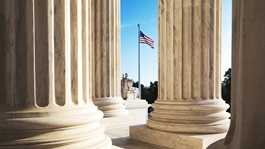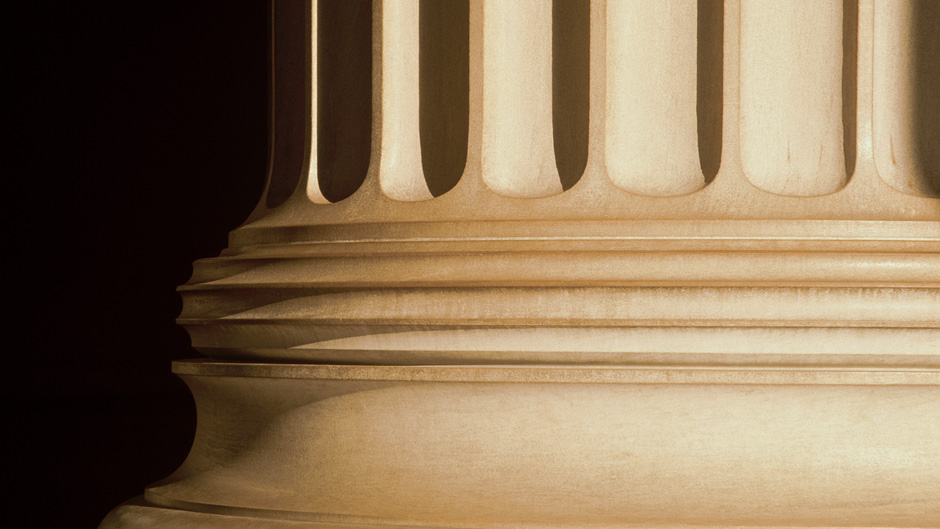On June 24, 2016, the Texas Supreme Court attempted to clarify private nuisance law in Crosstex North Texas Pipeline, L.P. n/k/a Enlink North Texas Pipeline LP v. Gardiner. In the 54-page unanimous opinion, the Court acknowledged that nuisance law has been referred to as the law's "garbage can," a "morass," and an "impenetrable jungle." Recognizing the need for clarity, the Court emphasized that the term "nuisance" refers to a particular type of legal injury involving interference with the use and enjoyment of property. The Court explained that a defendant may be liable for causing a condition that constitutes a nuisance based on intentional, negligent, or strict liability theories. Importantly, the Court clarified that for strict liability claims based on "other conduct, culpable because abnormal and out of place in its surroundings," a nuisance can arise only out of conduct that constitutes an "abnormally dangerous activity" or involves an "abnormally dangerous substance" that creates a "high degree of risk" of serious injury. Simply put, the mere fact that a defendant's use of its land is "abnormal and out of place in its surroundings" will not support a claim alleging a nuisance.
Crosstex is a negligent nuisance case involving allegations by landowners, the Gardiners, that noise from a natural gas pipeline compressor station located across the road from their ranch created a nuisance that damaged the value of their property. A trial resulted in a $2 million verdict for the Gardiners. And now, after an eight year battle, the Texas Supreme Court has affirmed the Court of Appeals' ruling that the Gardiners will have to litigate their negligent nuisance case again.
Crosstex owns and operates a natural gas pipeline that is located near the Gardiners' undeveloped 95 acre ranch that they use for recreational purposes. Crosstex bought a 20 acre tract directly across the road from the Gardiners' ranch and installed a compressor station with four diesel engines that are each "bigger than mobile homes." At least one of the four engines runs 24 hours a day, 7 days a week. Several neighbors, including the Gardiners, complained about the "constant roar" of the compressor station and described the noise as being "as loud as a jet airplane or an engine of a locomotive sitting on [the] driveway." In response, Crosstex implemented a series of noise mitigation efforts. The Gardiners were not satisfied with these efforts, and consequently filed suit in 2008, alleging that Crosstex had both intentionally and negligently created a nuisance as a result of its noisy compressor station.
At trial, a jury found that the noise from the compressors constituted a negligent nuisance, and the jury awarded the Gardiners over $2 million in damages for diminution in the value of their property. The jury failed to find that Crosstex intentionally created a nuisance. Crosstex appealed. The Court of Appeals partially reversed, concluding that the evidence of nuisance was legally sufficient, but not factually sufficient, to support the jury's finding of a negligently created nuisance. The Court of Appeals also held that the trial court erred by denying the Gardiners' request for a trial amendment, and that the trial court should have submitted a jury question on whether Crosstex created a nuisance through conduct that was "abnormal and out of place." The Court of Appeals remanded the case "for a new trial and to allow the Gardiners to add the abnormal and out of place variation of their nuisance claim." Both parties sought review at the Texas Supreme Court.
The Court seized the opportunity to clarify nuisance law and explain what a plaintiff has to prove to recover for a nuisance.
Nuisance defined
First, the Court emphasized that the term "nuisance" refers to a legal injury that may support a cause of action. Nuisance is not itself the cause of action or the conduct that is necessary to support the cause of action. The Court defined a nuisance as "a condition that substantially interferes with the use and enjoyment of land by causing unreasonable discomfort or annoyance to persons of ordinary sensibilities attempting to use and enjoy it." Significantly, determining what is "substantial," "unreasonable," and "ordinary" in this definition of nuisance will be up to a jury to decide.
By requiring that the interference be "substantial," the Court made clear that it does not intend to protect landowners from "petty annoyances and disturbances of everyday life." Of course, what is "substantial" will vary depending on the circumstances of each case.
The Court further explained that to prove a nuisance (that is, a legal injury based on interference with use and enjoyment of land), a plaintiff must establish that the effects of the substantial interference on the plaintiff are unreasonable—not that the defendant's conduct or land use was unreasonable. The standard for determining whether the effects of the interference are unreasonable is an objective one based on a person of ordinary sensibilities.
Liability for creating a nuisance and potential remedies
Second, the Court addressed when a defendant can be liable for creating a nuisance. The Court noted that "there must be some level of culpability on behalf of the defendant; nuisance cannot be premised on a mere accidental interference." In short, the Court retained the following three general categories of conduct that may support liability for creating a nuisance:
- Intentional nuisance: A defendant who acts with the desire to create an interference or with knowledge that the interference is substantially certain to result is liable for intentionally causing the interference even if the defendant does not agree that the interference is substantial or that the effects on the plaintiffs are unreasonable.
- Negligent nuisance: A negligent nuisance claim is governed by ordinary negligence principles, meaning a plaintiff only needs to prove duty, breach, and damages caused by that breach.
- Strict-liability nuisance: A strict liability claim must be based on conduct that constitutes an "abnormally dangerous activity," not an activity that is "abnormal and out of place in its surroundings."
The Court briefly discussed three remedies that are potentially available to a plaintiff who prevails on a nuisance claim: damages, injunctive relief, and self-help abatement. The availability of damages depends on whether a nuisance is temporary or permanent. If a nuisance is temporary, the landowner may recover only lost use and enjoyment that has already accrued. Conversely, if a nuisance is permanent, the plaintiff may recover lost market value, including lost rents expected in the future.
The Court's holding
The Court held that the Gardiners presented legally sufficient evidence supporting the jury's finding that Crosstex acted negligently in creating the condition that constituted a nuisance. The Court further determined that the Court of Appeals complied with the standard set forth in Pool v. Ford Motor Co. in determining that the evidence was factually insufficient to support the jury's negligent nuisance finding. Pool v. Ford Motor Co., 715 S.W.2d 629 (Tex. 1986). Under Pool, a court of appeals can set aside a jury finding for factual insufficiency only if, after considering and weighing all of the evidence in the record pertinent to the finding, it determines that the credible evidence supporting the finding is so weak, or so contrary to the overwhelming weight of all the evidence, that the answer should be set aside and a new trial ordered. Id. at 635. The Court of Appeals' determined that the jury's negligent nuisance finding was contrary to the overwhelming weight of all the evidence given that Crosstex relied on expert advice, responded to neighbors' complaints, and continually took a series of steps to mitigate the noise from the compressor station's engines. The Court concluded that the Court of Appeals adequately described its reasoning why the evidence was factually insufficient to support the jury's finding as Pool requires, and the Court stated that it did not have jurisdiction to evaluate that reasoning.
The Court further held that the trial court did not abuse its discretion by denying the Gardiners' request for a trial amendment to add an allegation that Crosstex's conduct was abnormal and out of place in its surroundings. The Court stated that a claim alleging a nuisance must be based on conduct that constitutes an "abnormally dangerous activity," not an activity that is merely "abnormal and out of place in its surroundings." There was no evidence in the record that the compressor station was abnormally dangerous or that Crosstex engaged in the type of abnormally dangerous or ultra-hazardous conduct that would support such a cause of action.
Ultimately, the Court affirmed the Court of Appeals' judgment and remanded the case for a new trial. It will be up to a jury to decide the various issues of fact and determine whether Crosstex created a negligent nuisance based on the Court's guiding principles of nuisance law.
Key takeaways
- The Crosstex case will be required authority for any brief or opinion on private nuisance law in Texas since it synthesizes the Court's own precedents dating back to 1856 and is intended to clarify this area of law.
- Whether a defendant may be held liable for causing a nuisance depends on the culpability of the defendant's conduct, in addition to proof that the interference is a nuisance. The mere fact that the defendant's use of its land is "abnormal and out of place in its surroundings" will not support a claim alleging a nuisance. In the absence of evidence that the defendant intentionally or negligently caused the nuisance, the abnormal and out of place conduct must be "abnormally dangerous" conduct that creates a high degree of risk of serious injury to be actionable.
- The Texas Supreme Court made clear that the questions of whether an interference with the use and enjoyment is substantial, whether the effects of such an interference on the plaintiffs are unreasonable, whether the defendant intentionally or negligently created the interference, and whether the interference resulted from abnormally dangerous activities generally present issues of fact for the jury to decide, and therefore it will continue to be difficult to obtain summary judgment in nuisance cases.





